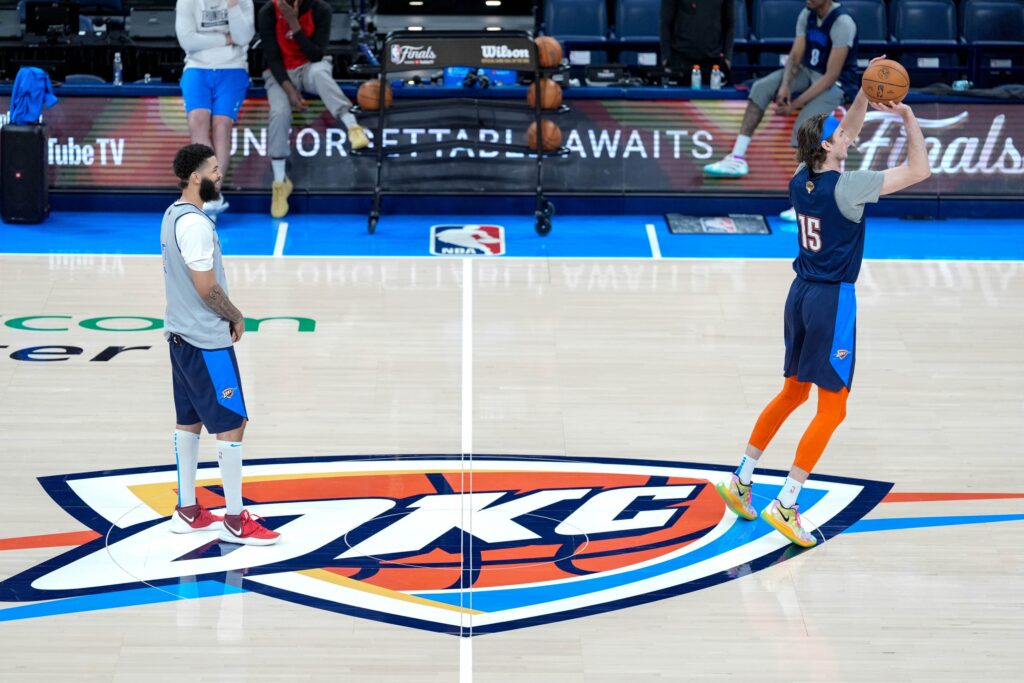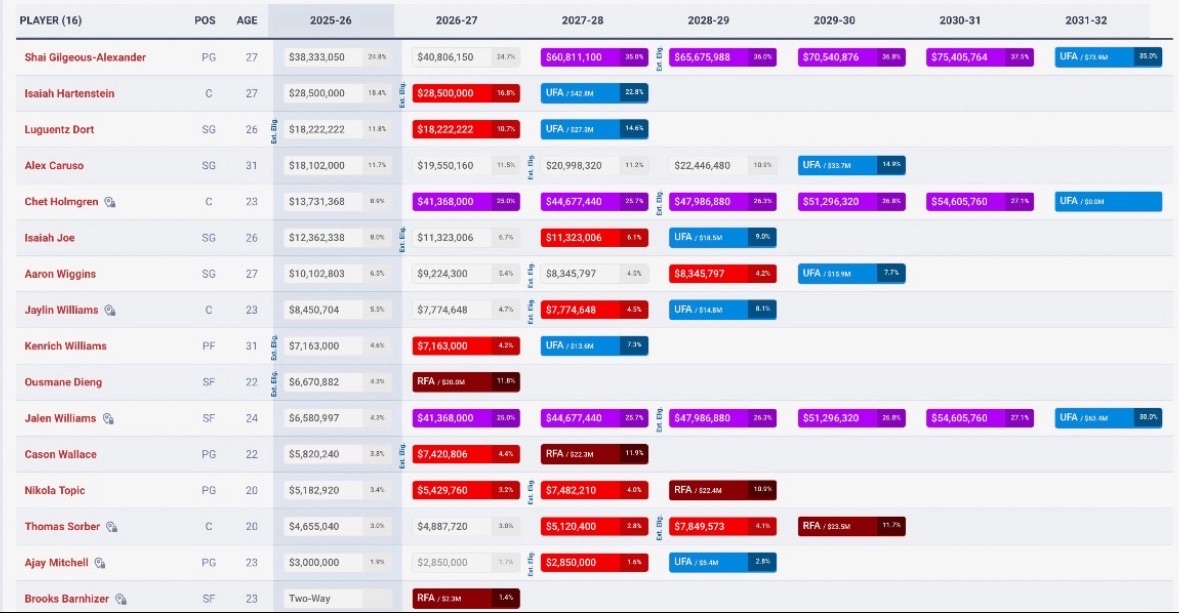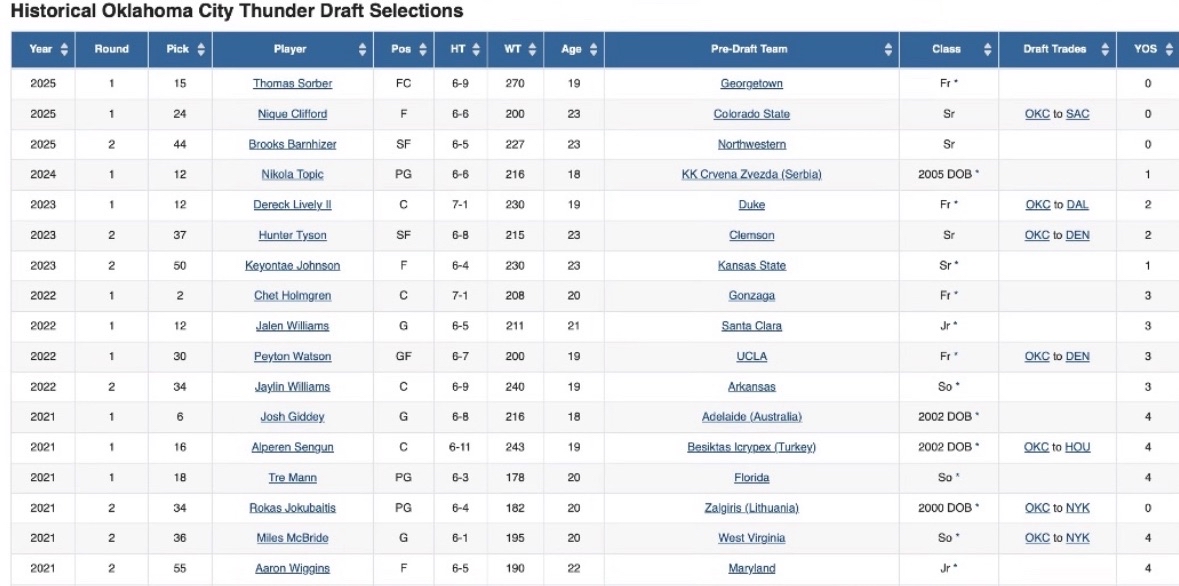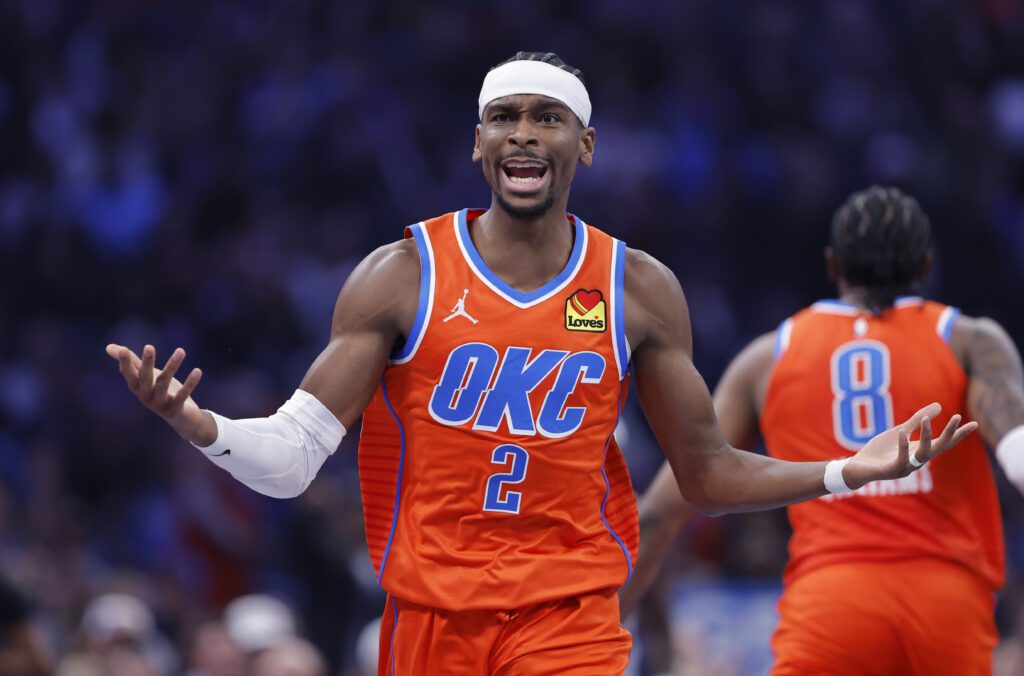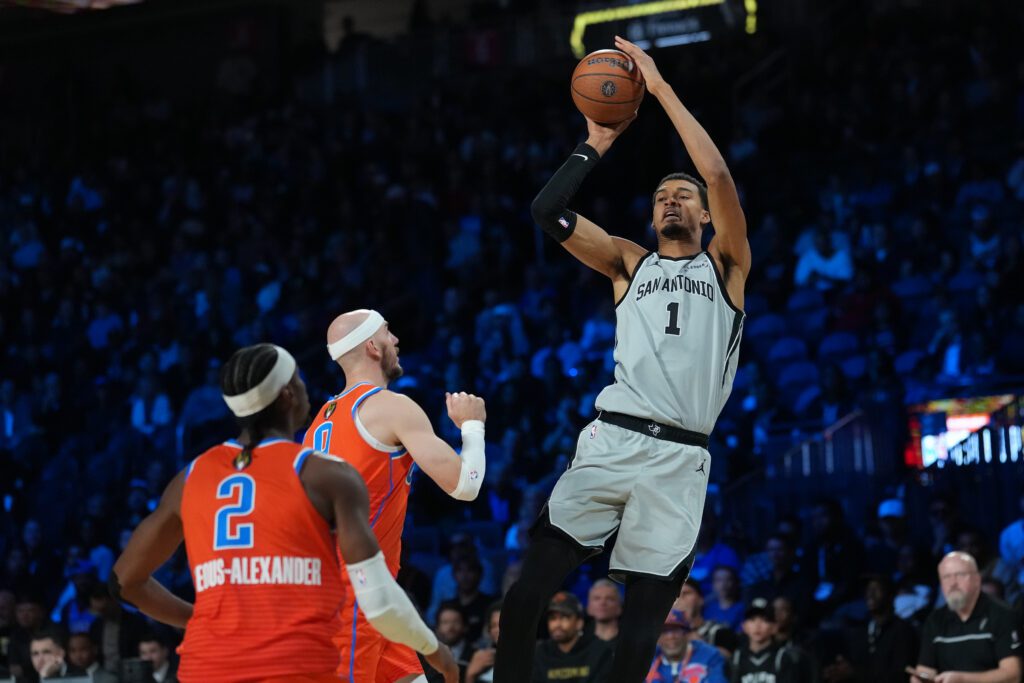Fresh off winning the NBA championship, the Oklahoma City Thunder are making significant financial commitments. Extending Shai Gilgeous-Alexander to a four-year supermax worth $285 million, Chet Holmgren to a five-year rookie-max worth potentially $250 million, and Jalen Williams to a five-year rookie-max that could pay him up to $287 million.
All in all, the Thunder have committed up to $822 million to their core three. In doing so, they locked up all three through at least 2031.
What’s the first thing that comes to mind? The second apron, which has been the topic of discussion, has many people wondering if this is the beginning of the Thunder falling apart. Which is interesting, considering they just won 68 games and are the reigning champs, and now have extended their best three players, who are 27, 24, and 23 years old.
However, that’s the current reality of the NBA. The new CBA (Collective Bargaining Agreement) is designed to prevent dynasties by making it extremely difficult to keep teams together long-term, all of which the Thunder are trying to build.
In this offseason alone, we’ve seen the second-apron in full effect. For instance, the Boston Celtics have torn down their roster to cut costs due to restrictions of being in the second apron.
Understanding the Rules
First, let’s define the terminology and break down the key rules and implications of the new CBA, examining how it affects Oklahoma City long-term.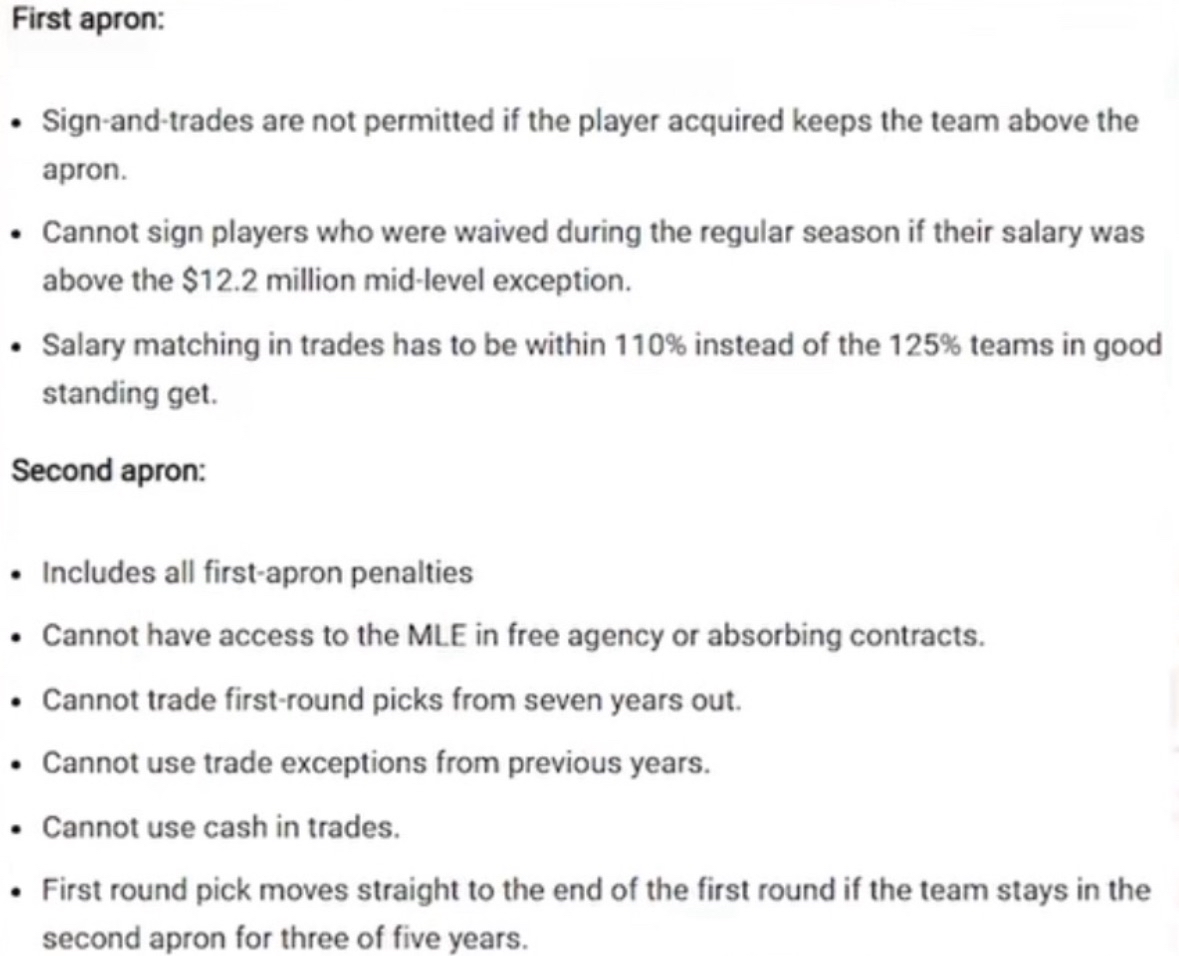
- Repeater Tax: The repeater tax is an increased luxury tax rate for teams that have paid the tax in at least three out of the four previous seasons. With the new rules intact, repeater penalties have a more significant impact. The higher a team’s payroll exceeds the tax line, the higher the tax rate becomes.
- First Apron: The first apron is a team salary threshold that triggers additional restrictions for teams exceeding it. Teams cannot use the full mid-level exception, take in more money than they send out in trades, or sign buyout players.
- Second Apron: The second apron is a team salary threshold set above the luxury tax line. Exceeding that line triggers additional and more severe restrictions. Includes all of the first-apron penalties. In addition, teams cannot use cash, trade exceptions from previous years, nor have access to the mid-level exception in free agency or absorbing contracts. When a team finishes a season exceeding the second-apron, its first-round pick seven years out becomes frozen, which means it can’t be traded. The team’s first-round pick automatically becomes No. 30 if the team remains in the second-apron for three of five years.
Understand? Great! Now that we have an understanding, the Thunder have yet to pay the tax or exceed the second-apron. To answer the question, I’m sure, many will ask, when will that time come for them?
Oklahoma City’s Salary Cap Situation
Fans are simply throwing around the second-apron and new CBA term without understanding the situation in Oklahoma City, leading to a complete misrepresentation.
Oklahoma City is as well set up to deal with the new CBA and second-apron as any team in the history of the league.
I encourage everyone to shift their mindset when huge contracts are announced. Consider how much these players are paid compared to their total salary cap percentage.
The reason these players’ salaries are increasing so much is that the NBA salary cap continues to grow.
Shai Gilgeous-Alexander is set to make either 30% or 35% of the salary cap on his max deal. Chet Holmgren and Jalen Williams are both set to make 25% of the salary cap once their extensions kick in. There are ways both can bump up to 30% of the salary cap — by winning MVP, Defensive Player of the Year, and multiple All-NBA teams.
So we’re looking at a maximum of 35%, 30%, and 30% of the salary, equaling 95% of the salary cap between those three players, which is why many fans, looking at the sheer numbers, believe that this new set of rules will tear down the Thunder.
However, when you frame it as the percentage of the salary cap, it’s much easier to understand how the Thunder will build out the rest of the roster.
There’s a constant reminder on how teams need to avoid the second-apron. First, yes, technically, teams need to avoid the second apron. Still, teams need to avoid it for multiple seasons, because that’s where the most significant penalties come in to limit roster flexibility.
Another misconception is that we’re talking about 95% of the salary cap for just three players. Get this, that’s just the salary cap, not the second apron nor the luxury tax. Even with those three taking just about all of the cap, the Thunder still have a solid amount of money to fill out the rest of the roster, before you hit the second apron. Teams are allowed to go over it, but they prefer not to do so multiple years in a row if possible. However, it’s not the end of the world.
So here’s the man question: Why is this such a big concern for everyone? It’s because no other team thus far is as well built to figure the rest of the roster around their core three players with such a limited amount of money in their payroll, and the scariest current term right now… the second apron.
Oklahoma City’s Future Outlook in the New CBA
This is why Oklahoma City is in a unique situation. The amount of depth — cost-controlled depth—is why they are most equipped to handle this new set of rules.
At this stage, the Thunder are still way away from starting that since Williams and Holmgren’s extensions won’t kick in until the 2026-27 season. From that point on, critical decisions will need to be made regarding Isaiah Hartenstein, Lu Dort, and Kenrich Williams, who all have team options.
The 2027-28 season is when the second-apron will most likely come into effect as Gilgeous-Alexander’s supermax deal kicks in, along with a crucial decision regarding a potential rookie extension for Cason Wallace, and at some point will look to trade/replace Alex Caruso.
Here’s where the main difference comes into play between Oklahoma City and the rest of the league: their draft capital.
The Thunder hold a total of 26 picks (11 first-round picks and 15 second-round picks) until 2031. However, due to protections and potential trades, the actual number of first-round picks could be lower, potentially leading to more second-round picks.
There will be more pressure on Oklahoma City to draft well to complement their core three players. Here’s the thing: the Thunder have proven to draft extremely well.
The Thunder prepared and planned around their core three players accordingly, which is why they have all those picks to fill out their roster on cost-controlled contracts.
The only way to avoid the second apron entirely or avoid going into it for multiple years is for the remainder of the roster to be cheap.
Another talking point will be how the Thunder are historically cheap and are unwilling to pay the luxury tax, which is another misconception. The Thunder have paid the luxury tax in five seasons following the 2014 season, including being the most expensive team in the 2018-19 season in terms of paying the luxury tax. You’ll have to imagine they will be willing to spend a lot on this team.
When does the New CBA Contract Expire?
This point is going under the radar. This CBA deal expires in the 2029-30 season, and with these new extensions that the Thunder signed their core three players (which doesn’t go into effect immediately) — SGA (2027-28 season), Holmgren, and Williams (2026-27 season). The rules could change in a few years, and the second-apron may no longer exist, reverting to a system where teams can spend as much as they want.
Even if these rules stay intact in the next CBA deal, Oklahoma City is as well set up and well-positioned as a team could be, and the Thunder are out to prove it, with Sam Presti at the helm.
Main Image: © NATHAN J. FISH/THE OKLAHOMAN / USA TODAY NETWORK via Imagn Images

